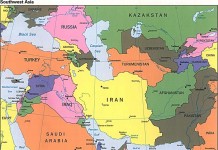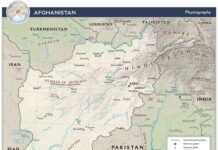Context

By Dr Claude Rakisits
This was never going to be an easy meeting between the leaders of one of the oldest democracies and the world’s largest dictatorship. The two countries have an increasingly conflicted relationship: on the one hand, they are global partners, especially but not solely in the international economic sphere, but, on the other hand, their strategic rivalry, particularly in the Indo–Pacific region, is becoming worrisome. Accordingly, the meeting went as well as one could expect. But given the trajectory of the bilateral relationship this summit may well be the last one with a veneer of courtesy.
This meeting was, without any doubt, more important for Xi than Obama. This gave the Chinese president a public platform from which to be perceived back home as an equal (whether true or not) to the president of the sole superpower. It also gave Xi the opportunity to state publicly and forcefully—as he did—China’s position on key issues.
Analysis
Cyber Theft
The first issue on which the Obama administration has been particularly irritated about is cyber-theft. This was made abundantly clear when Obama suggested at a recent business roundtable, that the issue of cyberattacks would ‘probably be one of the biggest topics‘ during President Xi’s visit. And indeed it was. At their joint press conference, Obama said that he had told Xi that cyberattacks against US targets ‘had to stop’. In response, Xi pledged that the Chinese government wouldn’t ‘in whatever form engage in commercial theft and hacking against government networks’.
Given that, according to US officials, China was behind the recent theft of the security files of some 22 million Americans, not too many people are convinced in Washington that the Chinese government will stop cyber theft, or prevent Chinese companies from doing so against US companies. There’s little doubt that were the Chinese caught once again hacking and stealing American trade secrets that the US administration would impose a package of economic sanctions against China, as per an executive order signed by President Obama in April.
South China Sea
The second issue, of particular interest to Australia, is China’s aggressive behavior in the South China Sea. President Obama broached the issue directly at the joint press conference, stating that he ‘had significant concerns’ over China’s reclamation activities which made it more difficult to resolve disagreements peacefully’. Xi didn’t budge and instead asserted that China was acting within its rights and that it wasn’t pursuing any militarization. Any wishful thinking that China would embrace Washington’s recent proposal for Beijing to halt land reclamation and end militarization was put to rest absolutely there and then.
Human Rights
A third issue on which there was unsurprisingly no movement was human rights in China. Obama forcefully re-iterated his ‘deep concerns’ over this matter, and, in return, Xi, as all previous Chinese leaders have done in the past, repeated the well-worn mantra that ‘countries have different historical processes’. Given Xi’s heavy-handed approach to anyopposition since he came to power in 2012, it’s no surprise that thousands of political prisoners are languishing in jails and will remain there for the foreseeable future.
Climate Change, Chinese Behavior
Still, the summit wasn’t all bad news. The big surprise was of course Xi’s announcement of a selective cap-and-trade emission plan that would kick in by 2017. Given China’s massive environmental problems and its status as the world’s biggest polluter, this was welcomed by US officials and environmentalists. But many are sceptical that this ambitious plan can be implemented so quickly. Nevertheless, it’s a step in the right direction, and it now puts pressure on the US Congress to also take stronger action on climate change.
However, the good news on the climate change front did little to dispel Washington’s concerns about China’s overall behavior. And some of its latest actions have done nothing to assuage those feelings. Aside from the issues discussed above, it’s obvious that China is increasingly flexing its muscles well beyond its immediate neighborhood.
The PLA Navy has been making deep forays into the Indian Ocean, including having submarines berth in Sri Lanka and Pakistan earlier this year. Even more worrisome is the report that a Chinese aircraft carrier has been sited off the Syrian coast in the last few days and Chinese advisers are on their way. But to demonstrate that they too can hug the other’s coastline, Chinese navy ships were spotted inside US territorial waters off Alaska during Obama’s visit to that state earlier this month.
Needless to say, all this is grist for the Republican Party mill. A number of presidential candidates, with Trump leading the pack, even suggested that Obama cancel the summit. Even Hillary Clinton has jumped on the anti-Chinese bandwagon.
So while there are areas where China and the US can work together, strategic competition between the two nations is real and is more than likely to become nasty down the road. The recent Xi–Obama summit has done nothing to dispel this perception.
A version of this article also appeared in the Australian Strategic Policy Institute (ASPI).
About the Author
Dr Claude Rakisits has had almost 20 years of experience in advising senior government and political leaders in strategic defense, foreign affairs, and trade issues. From 1999 to 2005, he served as a Senior Adviser to the Department of Prime Minister and Cabinet, to the Shadow Minister for Foreign Affairs, and to the Deputy Prime Minister of Australia. He was also the Director at the Strategic Policy Division of the Australian Department of Defense.
In 2006-2009 he taught international affairs at tertiary institutions in Switzerland. From 2010-2013 he was the academic adviser at the Centre for Strategic and Defense Studies, the senior staff college at the Australian Defense College in Canberra. He was also a member of the Office of National Assessments, Australia’s principal analytical intelligence agency.



